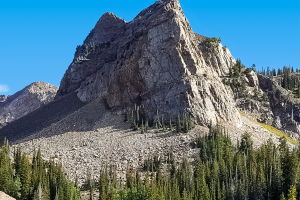We use our eyes to explore the world close to us. But when we want to look far beyond—way out into the sky or across mountains—we need something extra. That’s where the telescope comes in.
Today, let’s dive into this fascinating invention together. We’ll keep it simple, engaging, and of course, all about us—humans who just love to look further.
What Exactly Is a Telescope?
A telescope is a special tool that helps us see things that are far away. It works by using lenses or mirrors to gather light or other types of electromagnetic waves, like infrared or radio waves. Whether we’re gazing at the moon or observing a bird on a distant cliff, telescopes make the faraway feel close.
The word “telescope” actually comes from Greek—tele means “far,” and skopein means “to look.” Pretty neat, right? It literally means “to look far.”
We Go Back to the Beginning
The story of the telescope begins in the early 1600s in the Netherlands. Back then, people were already experimenting with glass lenses, mostly used in glasses. Someone had the clever idea to place two lenses in a tube. And just like that, the first practical telescope was born.
Soon after, telescopes made their way to Italy, where Galileo Galilei used one to study the sky. He didn’t invent the telescope, but he made it famous. Galileo used a type of telescope called a refracting telescope, which uses lenses to bend light and bring distant objects into view.
Fun fact: At the time, Galileo called his telescope a perspicillum, which simply means “an instrument for seeing clearly.”
We Built Bigger and Smarter Telescopes
After that, progress moved fast. Just a few decades later, scientists built reflecting telescopes, which used mirrors instead of lenses. Mirrors could be made bigger without distorting the image, so this was a big step forward.
Fast forward to the 20th century, and things really took off. In the 1930s, we created radio telescopes—these don’t use light at all. Instead, they capture radio waves from space. In the 1960s, infrared telescopes followed, helping us see heat and objects hidden behind clouds of dust in space.
One amazing example is the 100-inch Mount Wilson Telescope at the Mount Wilson Observatory near Los Angeles. This massive reflector telescope helped astronomers discover galaxies beyond our own.
Telescopes Today: Not Just for Space
While many of us think of telescopes as space-gazing tools, they’re used on Earth too. Scientists use them to study nature, watch wildlife, and even track weather patterns. Some telescopes are so small they fit in your backpack, while others are as big as buildings.
Today’s most advanced telescopes can pick up signals from almost any part of the electromagnetic spectrum, from visible light to invisible waves like X-rays and gamma rays. They’re like super eyes that let us explore parts of the universe we never thought we could reach.
So, Why Does This Matter to Us?
Because we’ve always been curious. We’ve always wanted to know what’s out there—beyond the trees, the mountains, and even the sky. Telescopes are part of our journey to understand where we fit in the universe. They help scientists answer big questions, but they also give all of us, Lykkers, a reason to look up and wonder.
Let’s Keep Looking Up
The telescope isn’t just something scientists use—it’s something that belongs to all of us. It stands for our curiosity, our big questions, and our love for discovering new things. Every time we look into the sky, we’re part of that same journey.
Next time you gaze up at the stars, think about how far we’ve come—and how much more there is to explore. The universe is full of stories, and with every glance upward, we’re getting closer to understanding them.
Lykkers, what’s the most amazing thing you’ve seen in the night sky? Drop your story—we can’t wait to read it!
[Orion Nebula, Saturn, Jupiter, Andromedy Galaxy, Moon] Live View and Images with my Telescope
Video by Astromagazine


